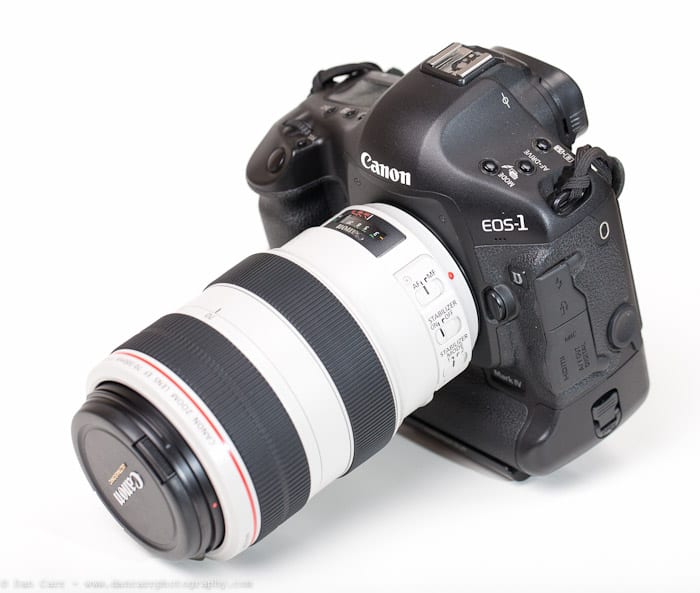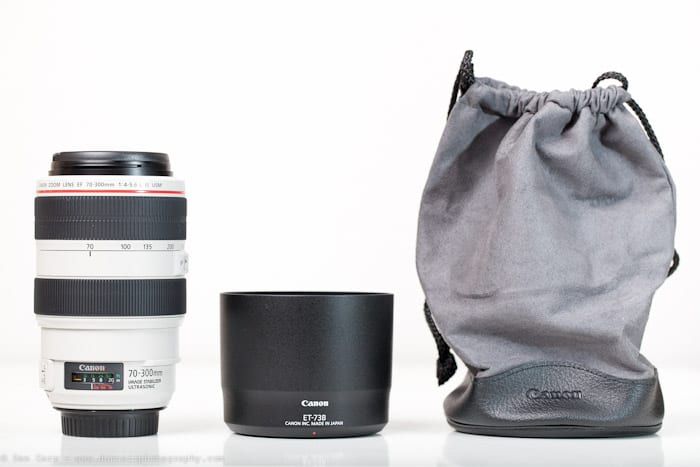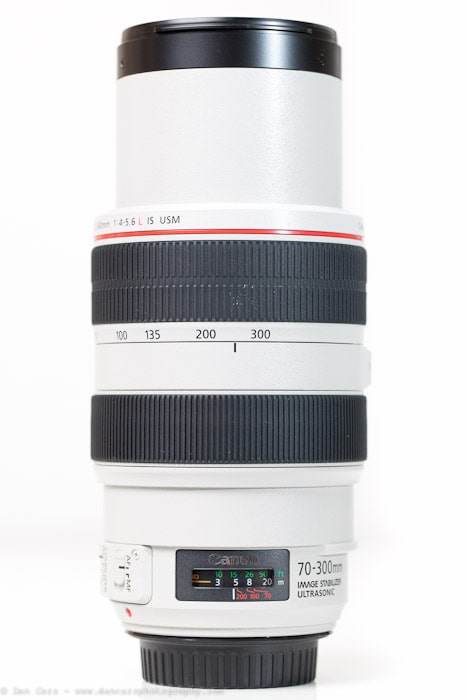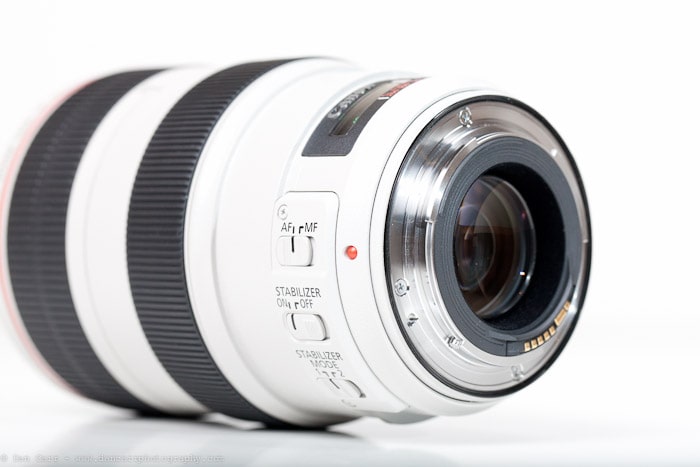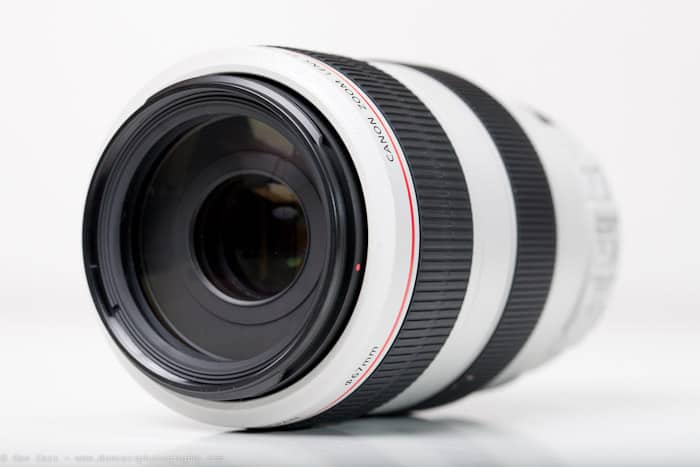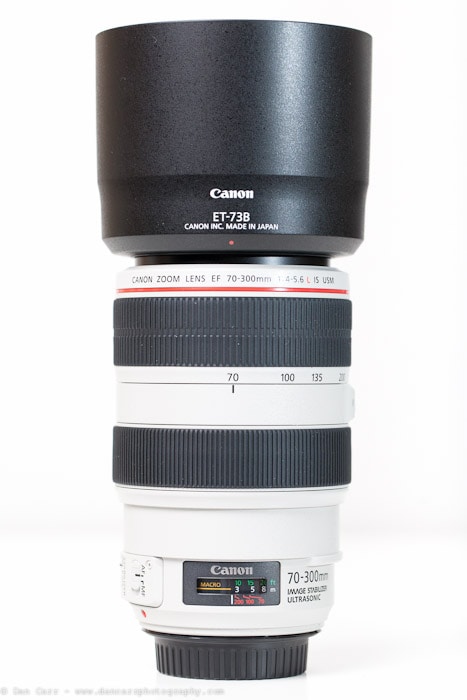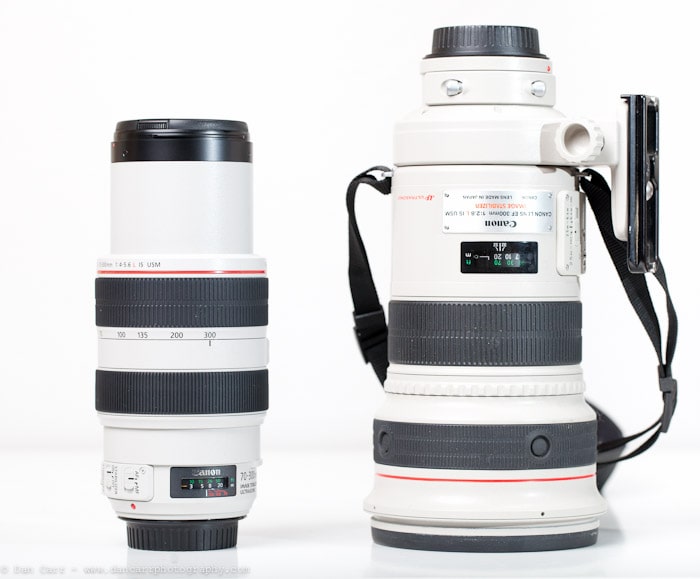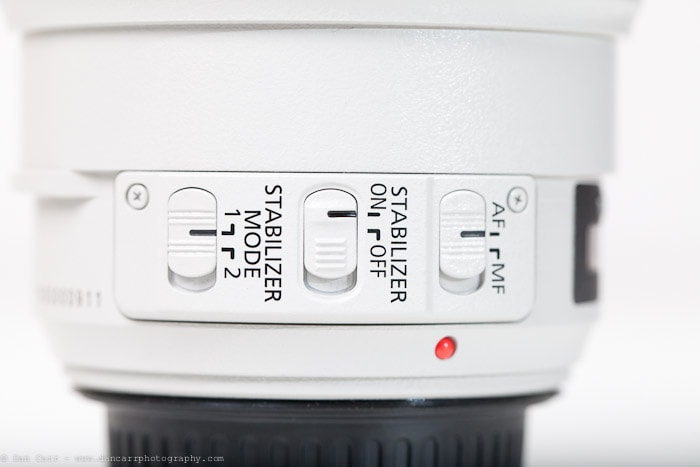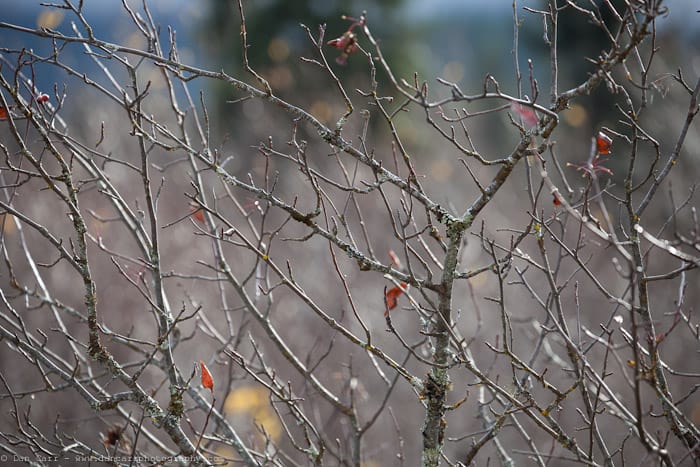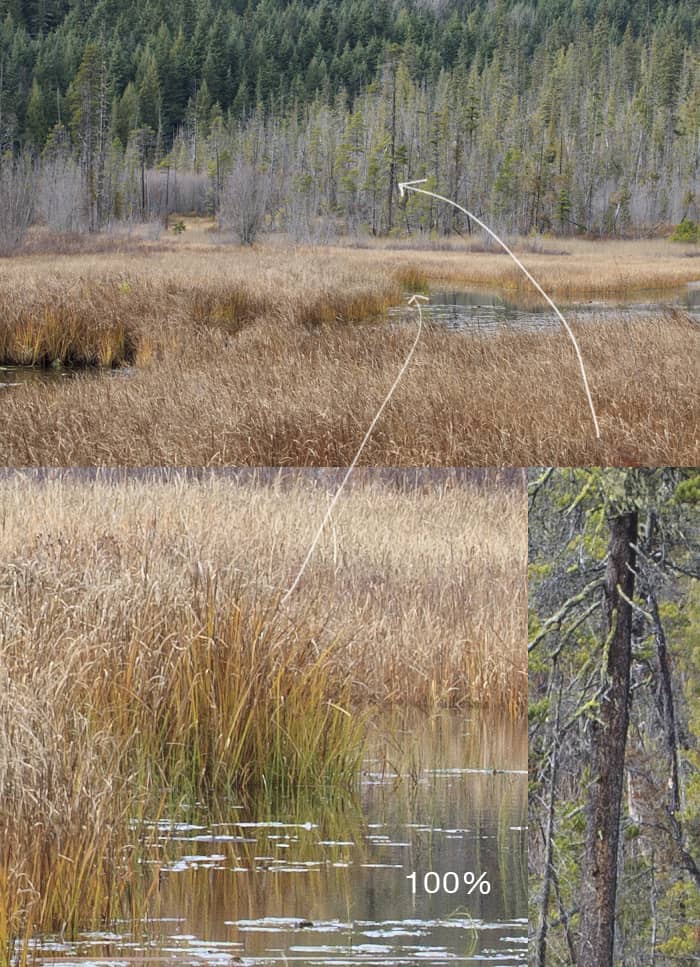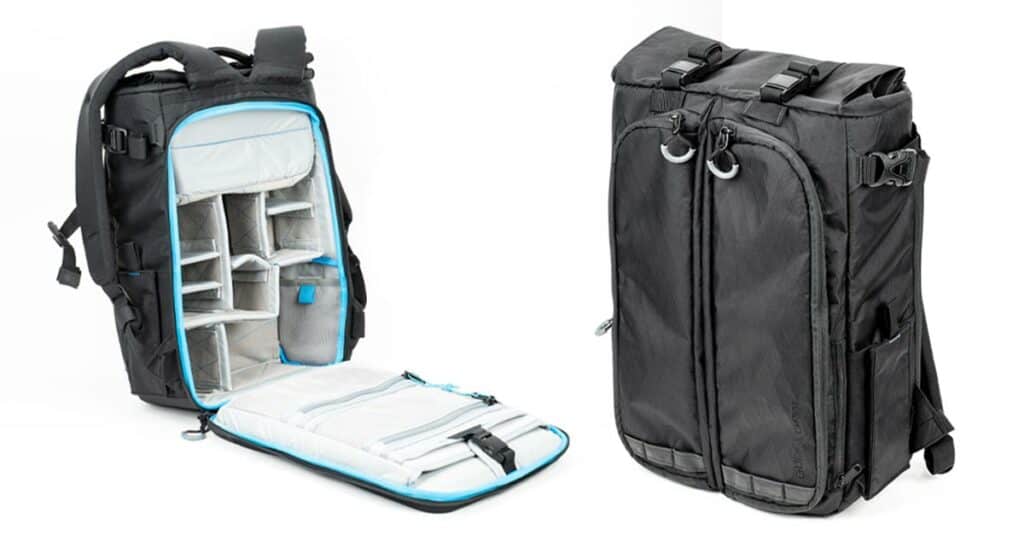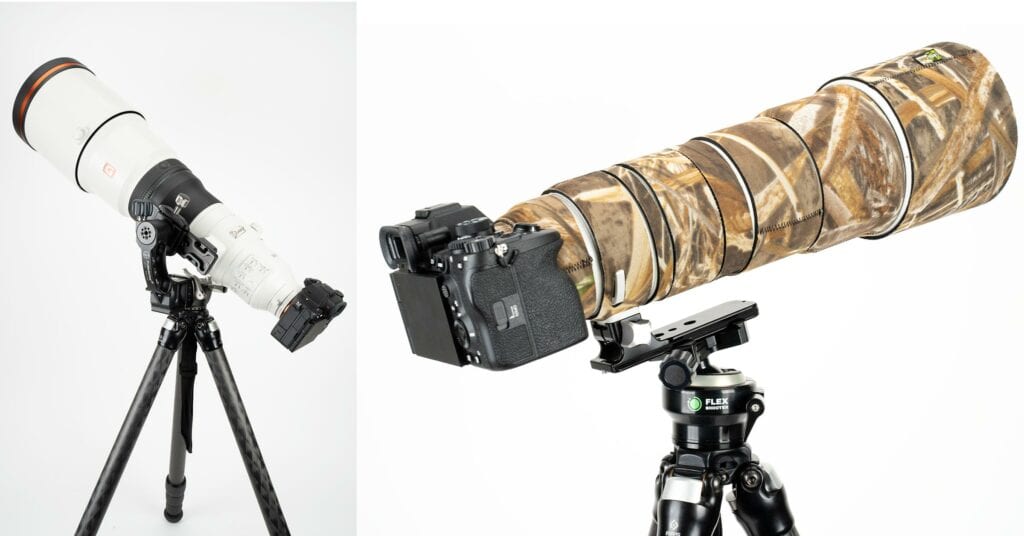The Canon 70-300 f4-5.6 L IS was announced in September 2010 and made it to stores at the beginning of November. There already exists two 70-300s in the Canon lineup but neither of them have ever been showered with praise. The previous 70-300 f4.5-5.6 DO IS lens was incredibly small due to its difractive optics design, but image quality suffered and it never sold in large numbers. The 70-300 f4-5.6 IS (non-L) is a more budget oriented lens (approx. $550) and again never really turned any heads. I heard a lot of people cry “Oh my god a variable aperture L lens, what are Canon thinking?!” when this one was announced. But they seem to have forgotten that one of Canon’s most popular zooms has always been the 100-400 f4.5-5.6, and also the aforementioned 70-300 DO lens was only not designated an L lens because it bore the green ring of the DO system instead. So this is nothing new, and clearly Canon thought there was a desire for such a lens. Things like this are not designed without some considerable consideration. Now I’ve had some shooting time with the lens I’ll delve into who it’s aimed at a little further down the page.
IN STOCK @ B&H NOW! HERE
This is all you get, NO tripod collar!
Build and design
Make no mistake, this feels like a tank of a lens! At just over 1KG it is 300g heavier than the 70-200 f4 L IS. Given it’s shorter physical length it feels about as dense as a 70-200 f2.8 IS. Built quality is fantastic and on a par with the 70-200 f2.8 L IS II that I reviewed before. It feels much more solid in the hand than my 70-200 f4 L IS does and the zoom mechanism is silky smooth with a nice amount of resistance to it. This is not a cheap lens (more on that in bit too…) so you would hope for a good build but its great when you first impression is WOW. This is one of the nicest feeling lenses from Canon yet. It comes with a lens hood which continues with the new textured style we have seen on the 100mm f2.8 IS Macro and the 70-200 f2.8 L IS II and it also comes with the usual lens pouch. Noticeable in it’s absence though is a tripod collar and frankly I think this is unforgivable. This is a $1600 lens Canon! What are you thinking ? Now you want people to go out and spend $200 on a collar for it ? The similarly priced 100-400 comes with one so why not this one ? From a design point of view there are two notable things. Firstly the lens extends considerably when zoomed, not like the 70-200s which maintain their length. Apart from making the lens look rather odd when zoomed to 300mm I don’t have any particular problem with this element of the design because it undoubtedly contributes to the compact nature of the lens. The second thing that struck me though was that the zoom ring and focus ring are reversed in positioning compared to just about every other lens I have used. The zoom ring is at the front, and focus ring closer to the camera body. The result is that the focus ring is right where you want to rest your hand when supporting the lens. It is all too easy to acidentaly move the focus ring and you always find yourself reaching awkwardly forwards for the zoom ring when you need it. I can’t imagine what made Canon arrange things like this, it only took me a matter of seconds to see the shortcomings of this and this seems to be a common gripe from other users too. I would genuinely like to hear the logic behind it so if anyone from Canon wants to let us know in the comments below… I’m all ears. Having a tripod foot to hang onto instead would be preferable but you don’t get one of those either unless you pay extra.
No room for using teleconverters here…
Looks like a strange optical system but you can hardly fault the results.
Compared too….
I think most people are going to be looking at the 70-200 f4 L IS when considering alternatives to this 70-300. I listened to one review of this lens today when the reviewer constantly mentioned the 70-200 f2.8 IS but I think that is not the right lens to put this one up against. People buy an f2.8 lens because they want the faster shutter speed in low light or they want the subject isolating abilities of the wider aperture. If you need either of those things then a variable aperture lens like this is NOT the lens for you. Belittling this lens for not having f2.8 is pointless because an f2.8 70-300 would be a HUGE lens and for an entirely different purpose. However if you are considering the 70-200 f4 IS, then you are already conceding that you do not necessarily need that wider aperture, in which case this could be a worthy alternative. It is a little heavier and physically a little fatter, but it is also shorter. They both take 67mm filters and are both weather sealed to a similar degree and neither of them come with a tripod collar as standard. Though the 70-200 f4 IS is $400 cheaper, it offers far less reach and if you want to extent your 70-200 to 280mm by use of a 1.4X teleconverter that will set you back about $400 and give you an f5.6 aperture. Another option would be to use a 300mm prime lens alongside your 70-200 and I have compared both the 300 f4 L IS and the 300 f2.8 L IS in the past. The 300 f4 is great value and much smaller then the f2.8 but still a considerable addition to your pack compared to the 70-300. As you can see from my photo below, the 300mm f2.8 L IS is in a league of it’s own…! Personally I got rid of my 70-200 f2.8 IS and traded it for an f4 IS because I rarely used it below f4 anyway, and much prefer the smaller size and lighter weight. When I need wide apertures I have prime lenses for that.
There’s not really any point considering the 70-300 DO as competition either, this new lens seems to be the final nail in that one’s coffin. It never performed well, has old IS technology and at $1200 it was overpriced too. Because this lens is priced out of reach of most amateur photographers there is also no point weighing up the pros and cons of the much cheaper zoom lenses in the same focal range. Before I even tested it I knew this would far out perform those lenses because Canon would not charge this price unless they really believed people would pay for the quality it produces. I’m guessing 90% of people considering this lens are making money from their photography and they will also appreciate the solid build quality and the reliability that comes with that. There might be some people that consider the 100-400 f4.5-5.6 alongside this one though. The 100-400 is physically larger and heavier but offers a longer reach for the same price. I haven’t ever used this lens though but it is a much older design and constantly the subject of new lens rumors. It probably is due an update sometime soon but its still a hot seller for Canon, mostly for people who want to get into shooting wildlife and can’t afford the big white prime lenses. For wildlife and bird shooting you need every mm of reach so 400 will be likely be a better option in that instance, though updated image stabilization and newer lens production techniques will probably yield sharper shots in the range of this 70-300. The 100mm Macro (see my review) in the image below is purely for size comparison, but also interesting to note the difference in construction between the two. The new macro lens is also one of Canon’s newer designs and actually one of the lightest weight L lenses they make, with the primary construction material being a high grade engineering polycarbonate. Tough as nails but it doesn’t inspire confidence because it feels a bit cheap in the hand. I’m glad to see Canon didn’t attempt to make this 70-300 in a similar way, the physical heft of this lens is great and it balances very nicely on a 1-series body.
Canon 100mm f2.8 L IS Macro , Canon 70-300 f4-5.6 L IS , Canon 70-200 f4 L IS
The other way to get to 300mm. Canon 70-300 f4-5.6 L IS , Canon 300mm f2.8 L IS
Aperture range
This is how the aperture changes along with the focal length.
70-103mm f4, 104-154mm f4.5 , 155-228mm f5.0, 229-300mm f5.6
4-stop tripod sensing IS
Testing compared to the 70-200 f4 L IS
All the usual things apply to my testing. I used a $5 bill as my test subject and set the camera on a tripod with a cable release and mirror lockup. I used liveview to focus manually at 10x magnification to avoid any front or back focus issues and all shots were repeated several times and the sharpest one chosen to show here. Instead of just showing the 70-300 I figured I might as well put it up against a know and trusted quantity, my 70-200 f4 L IS which I regard very highly. All the 100% crops were taken right from the middle of the photo and this time I didn’t perform any corner sharpness tests simply because there were already so many permutations I figured you’d all get bored and not look at them anyway! I did perform all the tests at 70mm, 135mm, 200mm, 300mm and in the case of the 70-200 for comparison I used a 1.4 TC to achieve a 280mm to go up against the 300mm. Plenty to consider, take it for what you will obviously there is always jpeg compression and human error to take into account but I think it gives a pretty good idea what’s going on.
Analysis of testing
UPDATE : More full sized images from this lens now posted on FLICKR to study and download HERE
70mm – Wide open at f4 the 70-300 is sharper than the f4 IS. From f5.6 onwards they are on par with each other and above f11 both start to suffer severely from diffraction issues.
135mm – To my eye the 70-300 is sharper at every aperture. Diffraction issues kick in a little later at this focal length. Both lenses produce extremely sharp images.
200mm – Again I believe the 70-300 is marginally sharper at every aperture. Both are very very sharp though.
300/280mm – Both lenses appear to be nearly identical across the range. Notably good for performance with a TC on the 70-200. (UPDATE full sized samples at 300mm available on FLCKR appear to be much better than the above test would suggest.)
300mm real world sample – Click to go to full sized image via flickr. Lens tests are easy to get misled by. There is no substitute to real world usage. Take a look at this image at 300mm straight out of camera f6.3 HERE
Now this is pretty interesting! The 70-300 is sharpest in the middle of its range, razor sharp in fact at 135mm and 200mm. I love my 70-200 f4 IS and I was never expecting this lens to be sharper! Very impressive. Even at 70mm is does a great job, matching the 70-200 and even beating it wide open. Results are less impressive at 300mm though where it matched the 70-200 with the 1.4x teleconverter. Unexpected that, especially considering the stellar performance at shorter lengths. Its worth noting though that its not so much the 70-300 being that bad, as the 70-200 being VERY good with the 1.4x TC. Sometimes you just get a lens and a teleconverter that seem to have been designed for each other and I have such a pair right here. Now I know what some of you are thinking then….. whats the point of the 70-300 is you can get 300 ( or near enough) looking good with the teleconverter ? Auto focus speed and accuracy suffer badly with the TC, in backlit situations with the TC it’s hard to get it to lock focus at all and I wouldn’t really trust it to track a moving object. But the AF speed of the 70-300 seems to be very snappy , and of course that applies right through the range from 70 to 300mm. Personally I hate using TC in the field too, they are just fiddly things with more lens caps to worry about and when its an added fuss to get it out take lens off camera potentially getting snow/dust in there and put the TC on just to have a look and see if your framing looks better like that. Then you realize it doesn’t so you have to reverse the process again…. you get my point. Fiddly. With the 70-300, just turn the ring and you are right there.
It’s funny though because when I was seeing these results and some of the photos I was taking I was kind of surprised. And I think that’s the stigma of the variable aperture lens there. But when you think about it this is a bloody expensive lens and it had better be damn good for that kind of money and why shouldn’t it be better than the 70-200, it costs $400 more! I know for some people they just won’t be able to get their head past the varying aperture but canon have clearly gone to great length to make sure that even if the aperture is changing, you can shoot wide open at your desired focal length and still be satisfied that the image is going to be sharp. There is only marginal improvement by stopping down to f5.6 or f8.
I took the lens on a bit of a walkabout too and shot all manner of detailed things, just trying to find faults with it. I shot into the sun with no appreciable flare, I shot trees with backlit branches wide open to try and get some chromatic aberration, again no luck. Due to what must be a fairly complex optical system I was concerned about both these things but the concerns appear to be unfounded. Overall I have also been very impressed with the contrast of the images from this lens and in a backlit scenario it marginally outperformed the 70-200 f4 IS. I did however find one thing that I did not like much at all and that is the bokeh produced by specular highlights. The image below is a 100% crop and boy is that some ugly bokeh! This is clearly where the clever and compact optics are fighting back. Those of you who follow my work will know that I shoot action sport, mostly skiing and for me I can’t see when this bokeh would ever be a problem for me. Zoom lenses always have the ugliest bokeh, there has to be a price to pay for the versatility, as you can see the actual rings are only visible when you zoom right in. I can’t say for sure whether it is appreciably worse than most other zooms though, I know my 300mm f2.8 L IS would have made that look creamy though but for a price!
I wish I had a few better sample shots but the weather is not cooperating here right now in BC. I’ll update this with new images over the next couple of weeks though as I know a lot of people were dying to hear first impressions on this one. This next shot though is a good example of how sharp this lens is.
230mm @f6.3 on a Canon 5dMKII
Canon70-300 f4-5.6 @200mm f5.6Canon 70-200 f4 IS @200mm f5.6
88mm @f11
This example at 88mm shows that even though my previous test showed results at 70mm seem a tiny bit softer, it’s still performing well at the lower end.
Who is this lens for ?
I’ll narrow this down a bit first by telling you who it’s not for. NOT for people who want to shoot field sports or indoor sports, the 300mm range is nice but really you’d be better with a fixed, smaller aperture and you can forget indoor sports with f5.6 at 300mm that’s never going to work out too well unless you are using strobes for basketball. This is also not a lens for people wanting to shoot wildlife because 300mm will rarely be long enough and there is no ability to add a teleconverter for occasional extra reach. The 100-400 will be better for that. Landscape and nature shooters will like this one though, the 70-200 f4 IS is popular for that group, and this one improves on the sharpness of the 70-200 and being limited to f4.5 or f5.6 will not be an issue as they’ll be stopping down past f8 normally anyway. The relatively close focusing distance (1.2m) means that you can get macro type shots of plants and flowers pretty well too and the lens maintains a good sharpness at the minimum focus distance, unlike the 70-200 f2.8 L IS II that I tried a few months back (see my review). Whilst it is a bit heavier than the 70-200 f4 IS, its more compact length makes it very easy to fit into a small bag or even a large jacket pocket. Travel shooters are also going to love this lens and it would be a formidable dual lens setup when paired with a 24-70 f2.8 as you would have wider aperture for shooting people, street and architecture, and then the reach of 300mm for details and landscapes and occasional wildlife shots too. I know there are a lot of people that follow my work in the snowsports industry and for skiing and snowboarding photos I think this is going to be a real winner. The contrast is excellent which is always great for picking out graduations in the snow, the range (70-300) is perfect for 75% of what I do and the other 25% is really wider angle stuff, I rarely need to go longer than 300mm. Being outside all the time means I’m rarely shooting with a wide aperture anyway and most of my shots are between f5.6 and f8. Even wide open at f5.6 at 300mm it is nicely sharp. I do own a 300mm f2.8 L IS though which will always kick this ones ass at 300mm but it’s a beast of a lens to carry in your pack all day long. For snowmobile and helicopter access work I don’t worry about it but I don’t like to go hiking, touring or even just freeskiing all day with the 300mm f2.8 if I’m doing laps of a resort. For those situations this lens looks to be a winner. People with a big enough budget who want a good lens to capture shots of their kids are also going to love the flexibility of this range and the speed of the auto focus. I also think this is going to be a winner for those people who are shooting video with Canon DSLRs. The video shooters often have nice wide aperture primes in the low focal length range to take advantage of the big sensors and wonderful DOF, but I know many people want at least one lens to cover longer lengths where a wide aperture is often too difficult to manually focus anyway. The IS and AF are particularly quiet on this lens which again adds to it’s usefulness for video shooters. I expect to see this one being used by Canon wielding action sports filmers in the near future.
Conclusion
Good
- Excellent image quality even wide open
- Extremely solid build
- Physically compact size
- Shows very little CA (if any?)
- Good resistance to lens flare
- Great contrast even in back lit situations
- 4-stop IS is very quiet
- AF speed is quick and also very quiet
Bad
- No tripod collar included in a lens that cost $1600
- It costs $1600
- Variable aperture
- Poorly located focus ring easy to accidentally move
- Performance at 300mm not as good as the rest of the range UPDATE: More time with this lens now is producing beautiful real world images at 300mm. This is no longer a concern.
The two things that people will likely fixate on first with this lens are the variable aperture and the price. I heard people say this was going to be a lens for people to get as their first L zoom, or a lens designed for APS-C users. Frankly I don’t agree though, the $1600 price is prohibitive and given that the new 60D is around $1000 I don’t see many of those users paying $1600 for a lens. What I can say though is that Canon HAVE done enough to justify the price tag in my opinion. I was very pleasantly surprised to see that it exceeded the image quality of my favorite 70-200 f4 L IS and it feels like a much more solid package. This is a fantastic lens so long as you are not planning on using it in low light. If you think you need f2.8 then don’t even give this one a second look, they are different beasts. But for nature, travel shooters and action sports guys this is a great lens if your budget permits it. Wherever space and weight are at a premium this offers the best image quality and flexibility of any Canon lens I have ever used. Now imagine if Canon did come out with a 24-70 f2.8 IS …… that would be a dream 2 lens combo!
If you enjoyed reading this post please consider ordering the lens from one of the links below. It helps me to continue adding to the site. Thanks!

